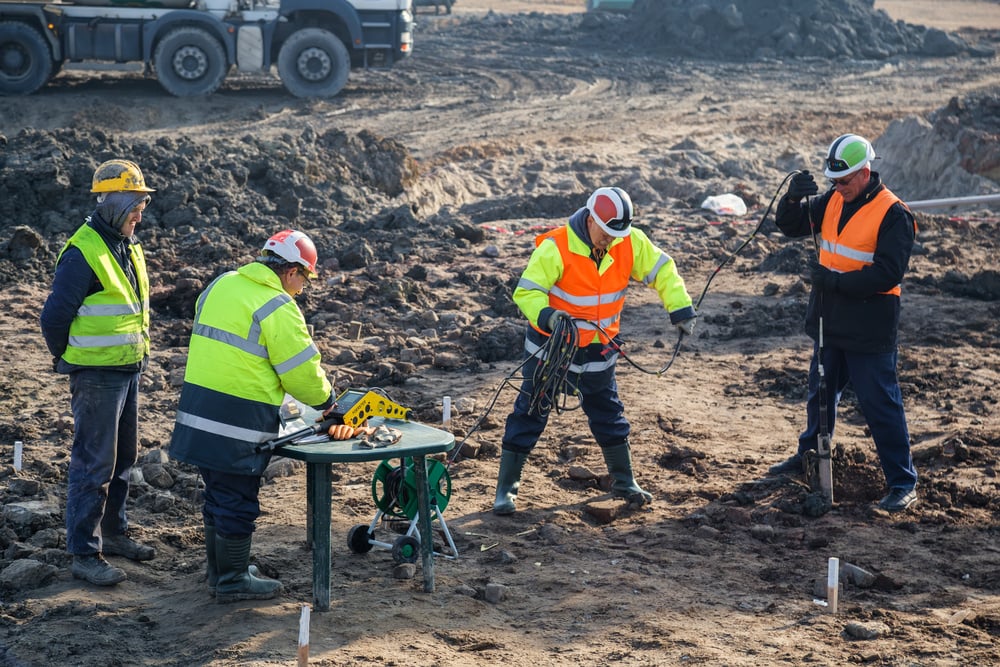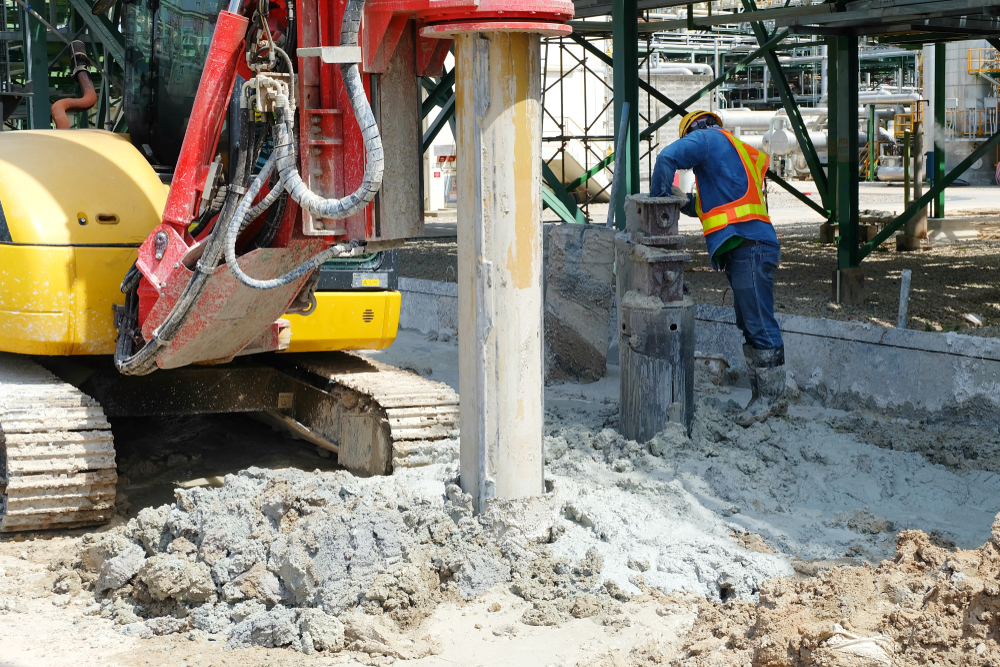The Only Guide for Geotechnical Engineering For Construction Projects
The Only Guide for Geotechnical Engineering For Construction Projects
Blog Article
Things about Geotechnical Engineering For Construction Projects
Table of ContentsSome Known Facts About Geotechnical Engineering For Construction Projects.Some Known Questions About Geotechnical Engineering For Construction Projects.See This Report about Geotechnical Engineering For Construction ProjectsSome Known Details About Geotechnical Engineering For Construction Projects The 6-Minute Rule for Geotechnical Engineering For Construction Projects
For that reason, during the examination, it is crucial to pierce at the needed deepness and the called for number of openings according to the recommendation of the Canadian Structure Design requirement. In some cases, the proprietor might save some Geotechnical Investigation price but wind up spending greater than the prepared for during the building price.The responsibilities of the geotechnical professional entail supplying material screening for construction support. Geotechnical Engineering for Construction Projects. Geotechnical designers analyse all the area test reports to make certain that building and construction is taking place as per the project spec. Throughout building and construction, a confirmatory examination for soil compaction is done on-site to ensure that no future settlement occurs
After the concrete is poured -7 days and 28 days- tests are conducted on concrete examples gathered from the website to ensure that the concrete poured meets the design standard. Asphalt core is taken after the Asphalt is laid and compressed to verify that it satisfies the style standard. All laboratory test reports are analysed by the Geotechnical Engineer to guarantee that it meets the task spec.
The smart Trick of Geotechnical Engineering For Construction Projects That Nobody is Discussing

Geotechnical engineering plays a crucial duty in making certain the security of construction tasks. Geotechnical engineering is a vital branch of civil engineering that focuses on comprehending the behavior of earth materials, such as soil and rock.

For a dependable structure and a smooth building and construction process, depend supply the competence you need. Get in touch with to obtain professional suggestions and geotechnical services tailored to your next project.
Little Known Questions About Geotechnical Engineering For Construction Projects.
When starting a land development task, comprehending the ground below your feet is as vital as the frameworks you plan to develop over it. Our Geotechnical Design group evaluate the ground, guaranteeing it is ideal for the suggested advancement while offering you with the information called for to satisfy your task goals.
Geotechnical Design checks out the formation of the ground, as it is the structure obstructs for all jobs. Where frameworks require to be designed with regard to the ground conditions; ground conditions (e.g., soft ground) may require strengthening depending upon the Continued dimension of the useful link desired framework. Before building, you need to recognize about the groundwater, soil framework, and liquefaction possibility of your land.
For sites that are not linked on the regional authority infrastructure extra site examinations would certainly be called for to supply technological inputs for on-site stormwater and wastewater. We have actually experienced Geotechnical Designers based in each office, sustaining your geotechnical demands nationwide. Connect to us to review exactly how we can support your next job.
These records are tailored to meet the specific demands of a task and include design parameters and guidance for the construction of a series of synthetic structures. Along with supplying consultancy services covering areas such as incline security and load-bearing capacities for different materials, these designers embark on study and development activities to improve methods, equipment, products understanding and analysis covering whole lifecycles.
Rumored Buzz on Geotechnical Engineering For Construction Projects

Prices of pay generally raise as your understanding and abilities expand, with guidelines pointing to a graduate starting salary of in between 18,000 and 28,000 per year in the UK. This rises to 26,000 to 36,000 with a couple of years of experience and then reaching 40,000 to 60,000+ for senior, chartered or master engineers.
Nonetheless, with the best application it is possible to grasp the occupation and gain access to a difficult yet satisfying and important job. A geologist would certainly need to re-train to become a geotechnical designer, although there is a lot of cross-over between both professions, which could make this simpler - Geotechnical Engineering for Construction Projects. Rock hounds require to have an understanding of dirts, rocks and other materials from a clinical point of view, while geotechnical designers story their expertise of issues such as dirt and rock technician, geophysics and hydrology and use them to design and ecological jobs
When starting out, these engineers will certainly often tend to work on less intricate projects, constructing up knowledge and experience ready for even more tough work later on. Geotechnical designers tend to specialise in specific areas as they grow in experience, concentrating on specific frameworks such as trains, roads or water. These designers also work with renewable resource, offshore and onshore oil and gas, nuclear power, and more.
A Biased View of Geotechnical Engineering For Construction Projects
The time taken to end up being a geotechnical engineer depends on where you are based, where you research study and what degree of education you desire to acquire before entering the workplace. Generally-speaking it takes 3-4 years to reach the fundamental demands to start a job as a geotechnical engineer.
These operations allow professionals to examine a host of dirt auto mechanics including weight, porosity, void-to-solid fragment ratio, leaks in the structure, compressibility, optimum shear toughness, bearing ability and contortions. If the framework calls for a deep foundation, designers will use a cone infiltration test to approximate the quantity of skin and end bearing resistance in the subsurface.
When analyzing an incline's equilibrium of shear tension and shear stamina, or its capacity to stand up to and undergo activity, rotational slides and translational slides are generally thought about. Rotational slides fail along a curved surface, with translational slides occurring on a planar surface area. An expert's objective is to determine the problems at which a slope failing can occur.
Frequently, findings recommend that a website's soil should be treated to improve its shear toughness, tightness and leaks in the structure before layout and construction. When it comes time to set out structure strategies, professionals are increasingly focused on sustainability, even more specifically just how to minimize a structure's carbon impact. One method has been to replace 20 percent of a foundation's concrete with fly ash, a waste product from coal fire nuclear power plant.
Report this page